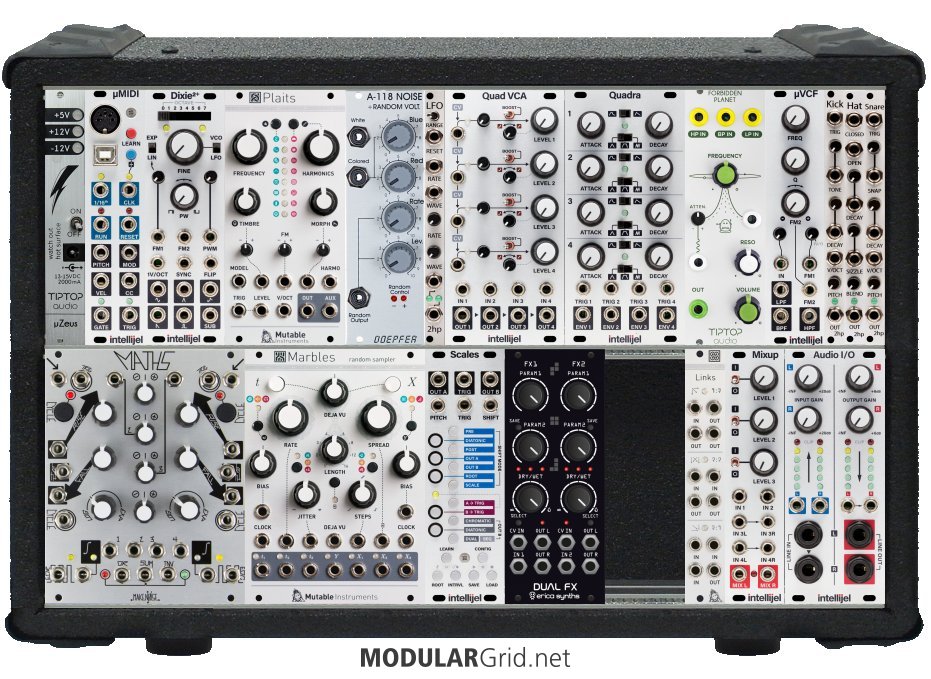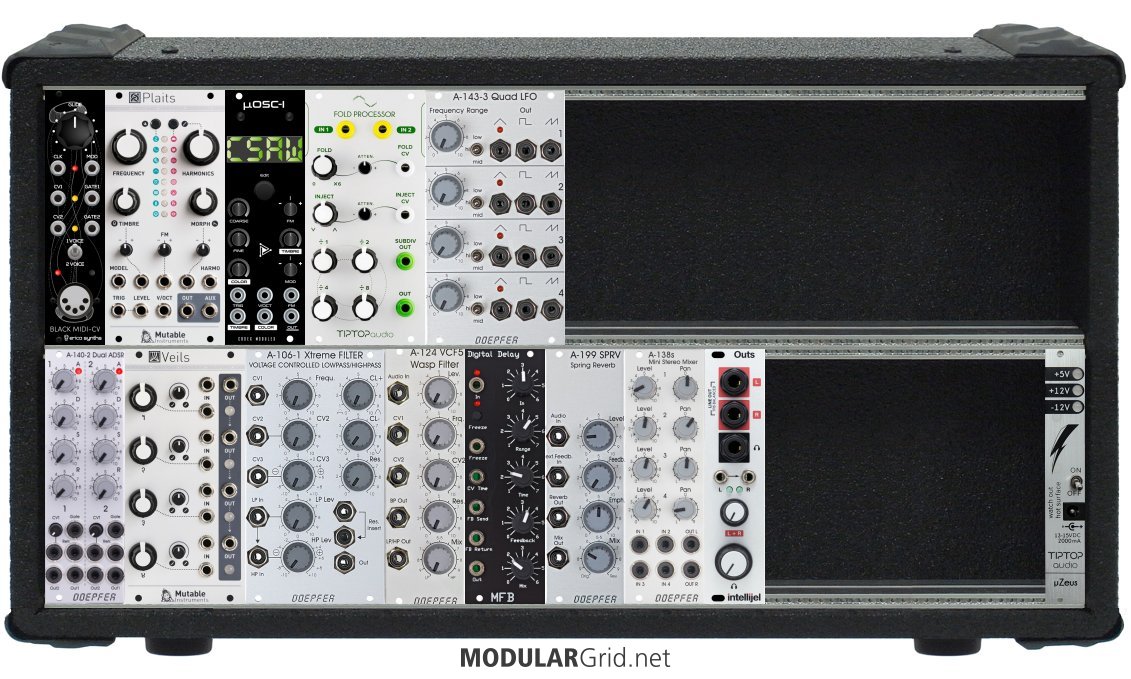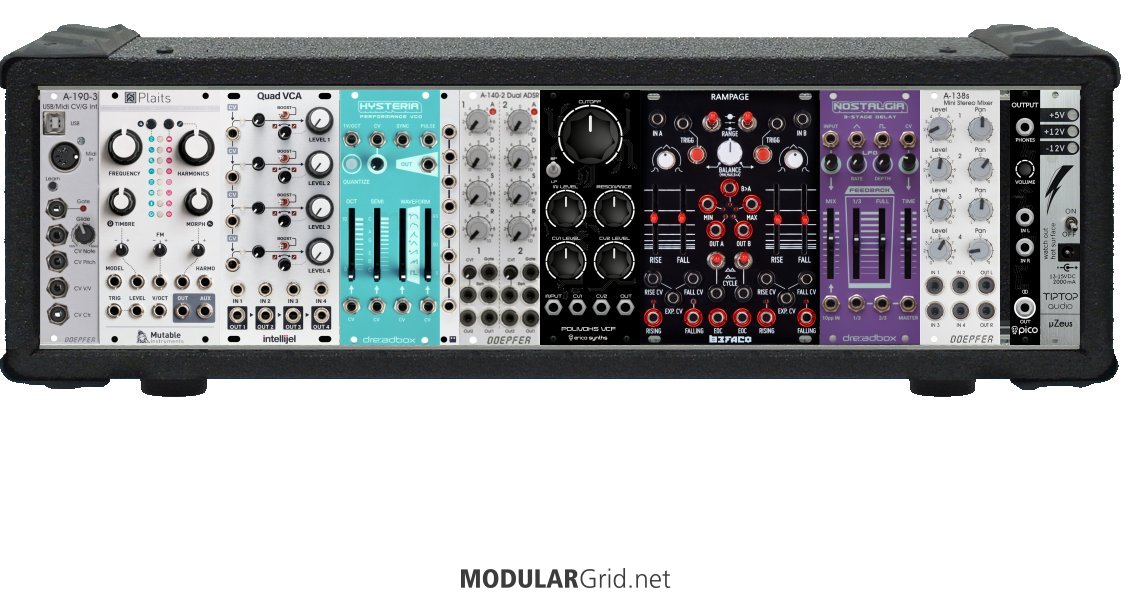OK...a couple of things jump right out. First up, aside of the Dual FX, you don't have anything in here that's stereo. Yes, I know the Mixup seems to be stereo...but look closely: there's no panning on that. It's more of a "summing mixer", not something that can actually allow you to spatially-locate sound. Then, by extension, the Audio IO becomes pointless as well. Taken together, that's $350-ish, and it doesn't quite accomplish what it needs to. So...look instead at Doepfer's A-138s, which IS a four-in stereo mixer, and then at Happy Nerding's OUT, which gives you transformer isolation, a parallel stereo bus input, and master level controls...plus a headphone pre, 1/4" outs, and metering. Total: $270. Every bit counts, after all...
Then, I'd remove the drums. Seriously...you're probably better off with a dedicated drum machine, as this rig here doesn't really have the sequencing needed to support drum programming. And also, since there's no sequencing here, why is there a quantizer in there? Certainly not for the MIDI CVs...that's already quantized.
Filters...sort of redundant, really. The Forbidden Planet and the uVCF are rather similar designs. If you're going to have two VCFs in here, make them pretty divergent in sound...that way, you can put one out front as a "lead" voice and the rest of the sound can go thru the other.
Envelopes...the Quadra is decent as a two-stage EG, three if you use the ASR mode. But there's nothing here that can really make the filter(s) shine; for that, you'll probably need a couple of proper ADSRs...something like Doepfer's A-140-2. And then, with that in place, you can scale your AR envelopes back a bit.
TBH, the best way to reduce the budget here might be to make the build larger. That might sound counterintuitive, but the fact is that smaller modules tend to cost more in the long run than ones that take up more space, mainly because you can cram loads of them in. By moving up to a 2 x 104 hp cab, you can then put in a larger module that can cost the same (or less) that also gives you more functionality. For instance, let's say you were able to swap that 2hp LFO for a Noise Reap uLoaf. Same price. BUT...the uLoaf gives you a second LFO, more functions, some random capabilities in only 4 hp more space. But wait, there's more!...
Let's look at the cost of the spaces each module takes up! Now, $99 / 2 = $49.50 per space covered. But the Noise Reap comes in at $16.50 for each. So what's going on here? Simple...as you build up a row, make note of each module's cost per hp like that, then average this out when the row is populated so that you can see what a row costs per hp. This is a good indicator of your build costs; the lower that cost per hp number goes, the more cost-effective the build is. Filling a row out that comes in at an average of $17/hp is better than $21/hp, cost-wise...and by using that little formula, you can account for a single module that jacks up the row cost across the entire row's cost profile.
One last warning: this isn't a video game. You don't have a "win" here, there's no timer, no score. Don't EVEN try and get things right on your first build on MG; at this point, you're just sorting out that there's this many modules. It's NOT necessary to get the first build right...basically, NO ONE gets the first build right. Ever. Period. Even if you have decades of experience. Instead, whittle at this for a while...several weeks, maybe a few months...while researching what will get you a sound that's your sound. Proceed at a pace that works for designing something you'll live with for literally YEARS and which costs a sizable chunk of money. Speed, basically, is NOT of the essence here.




